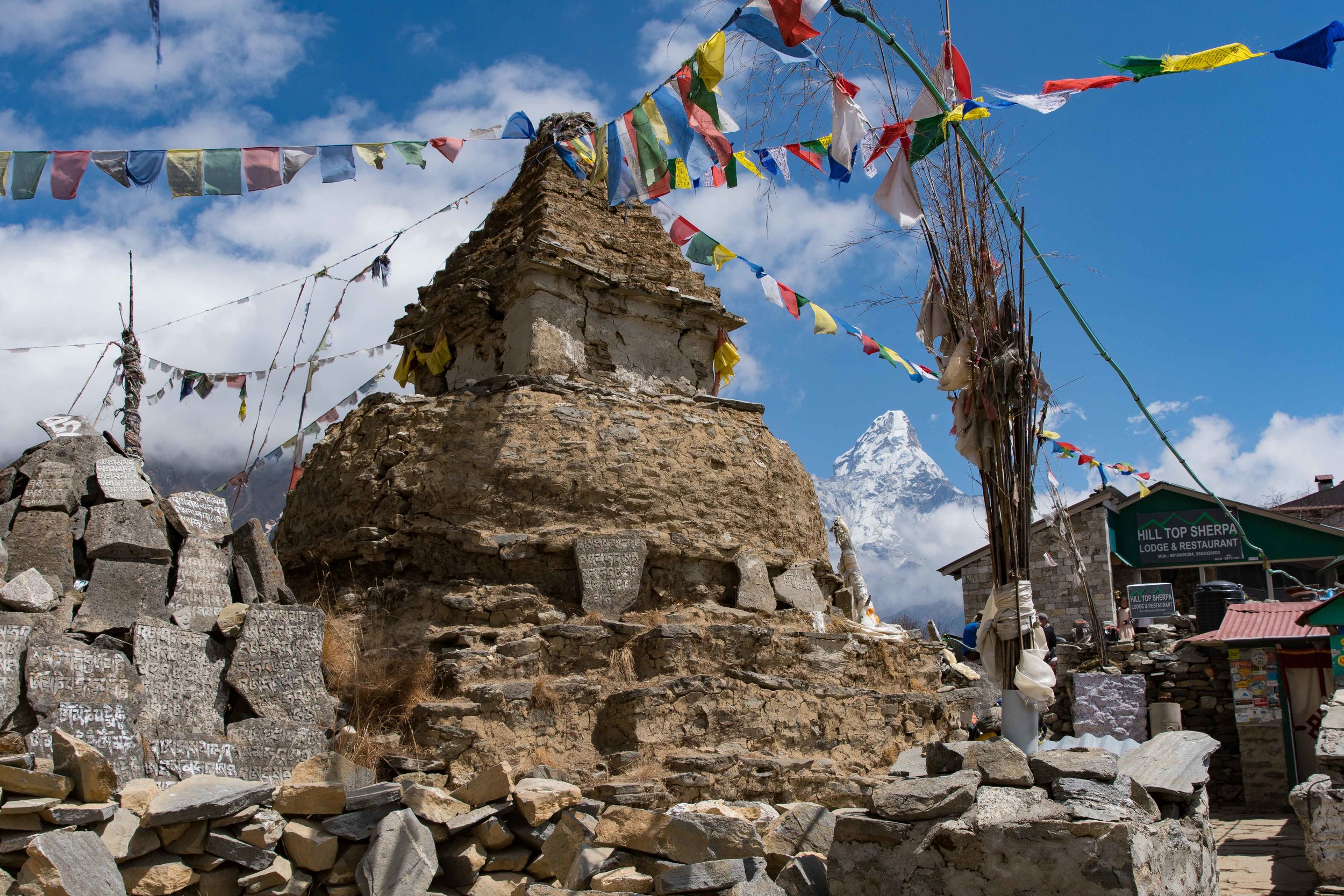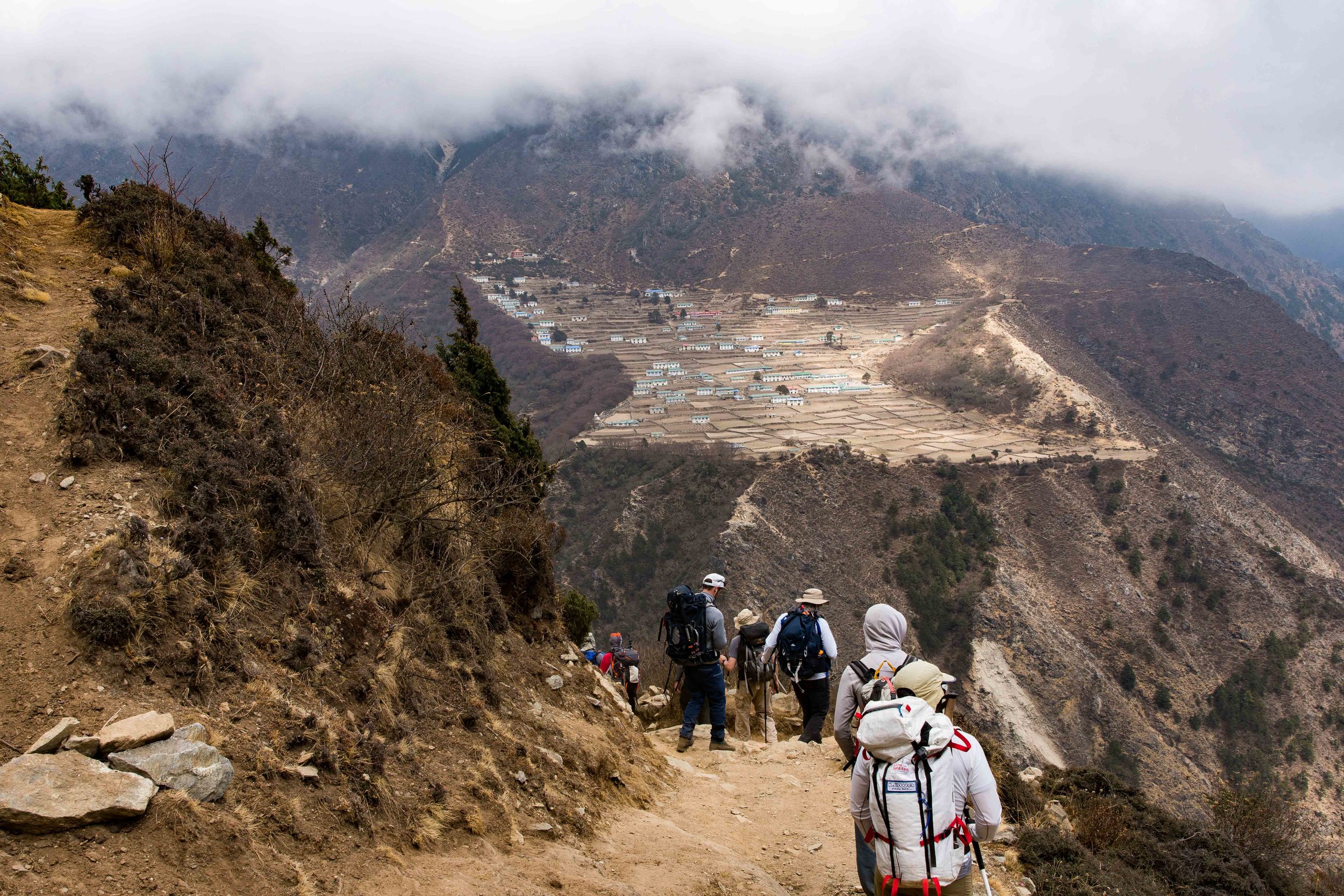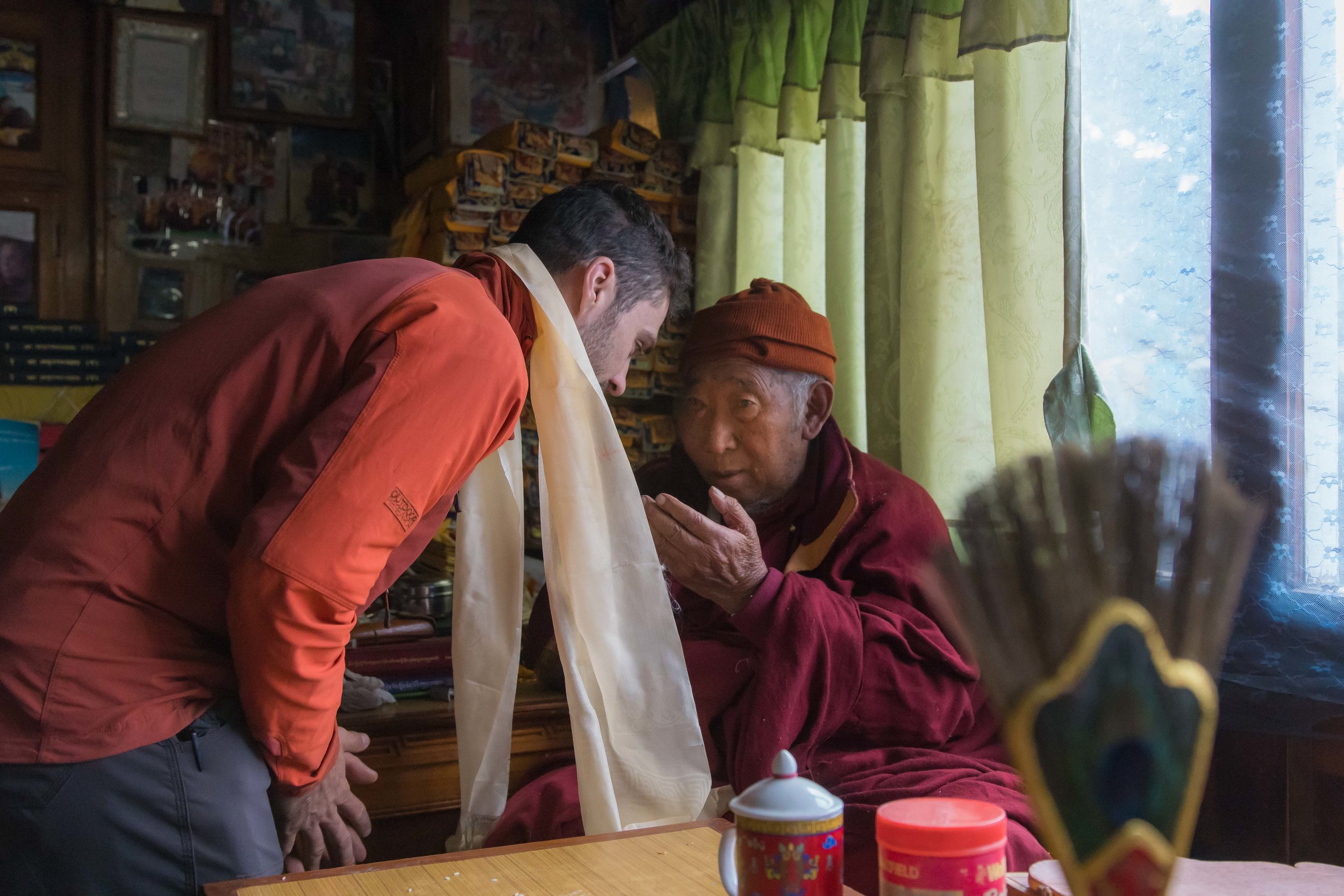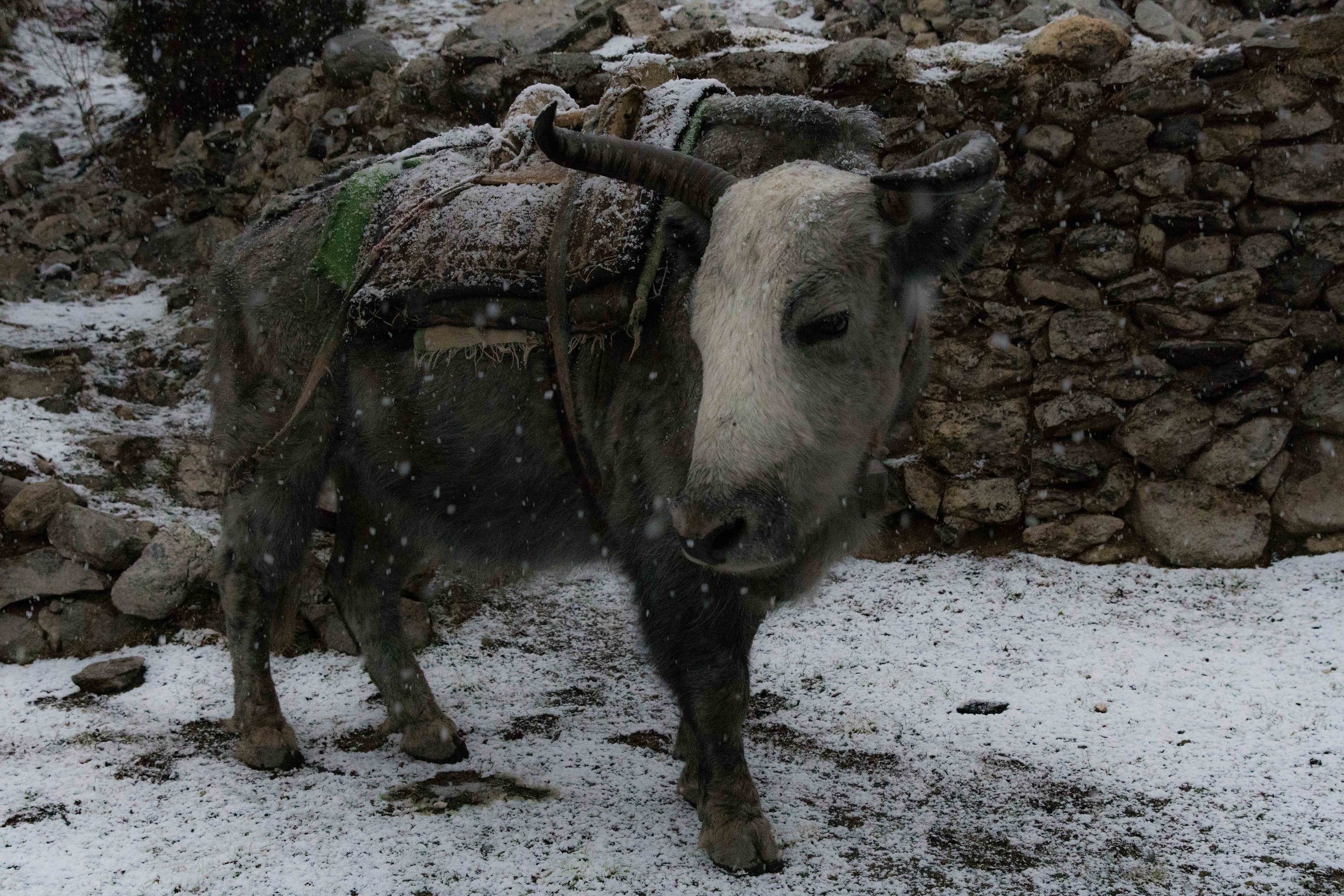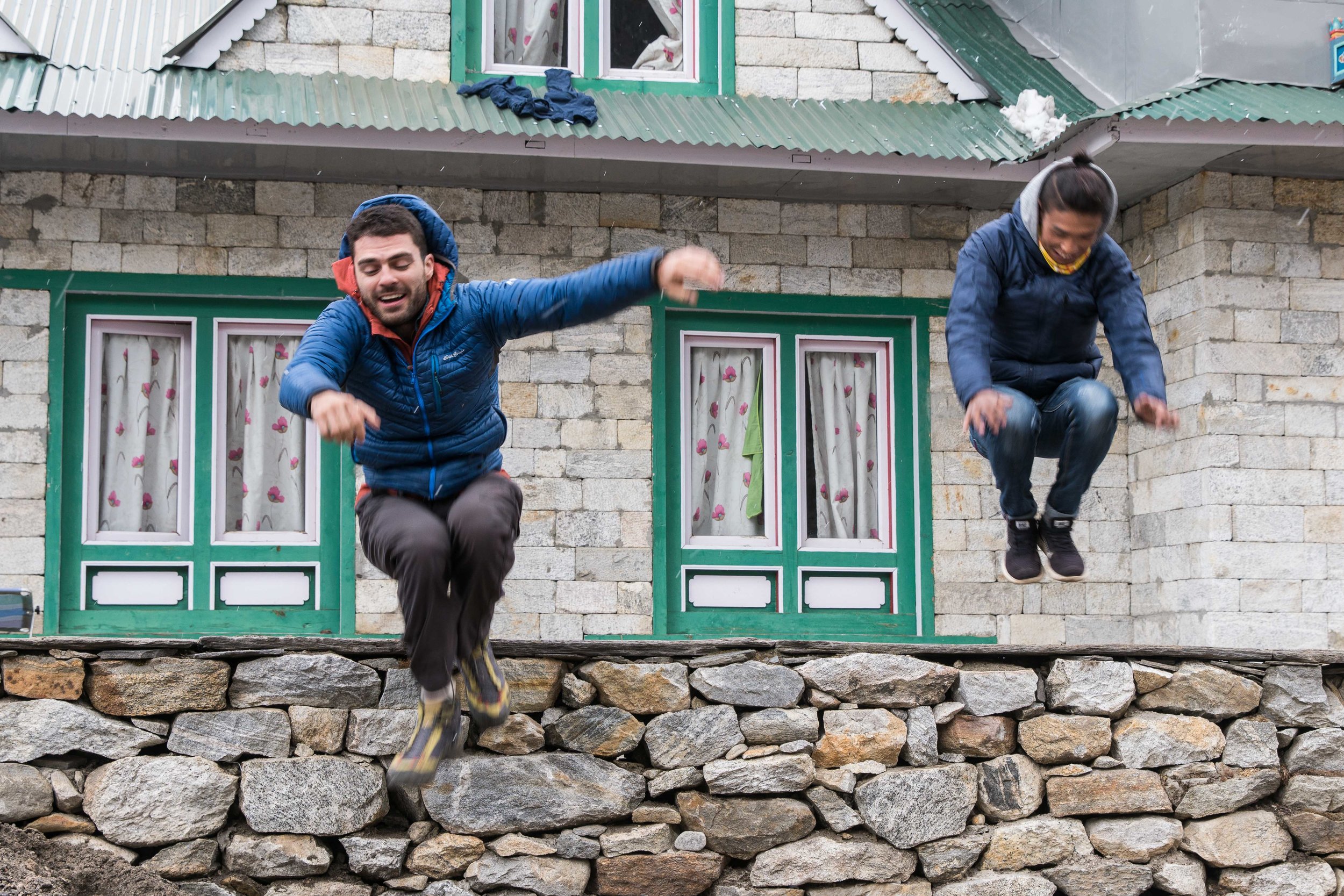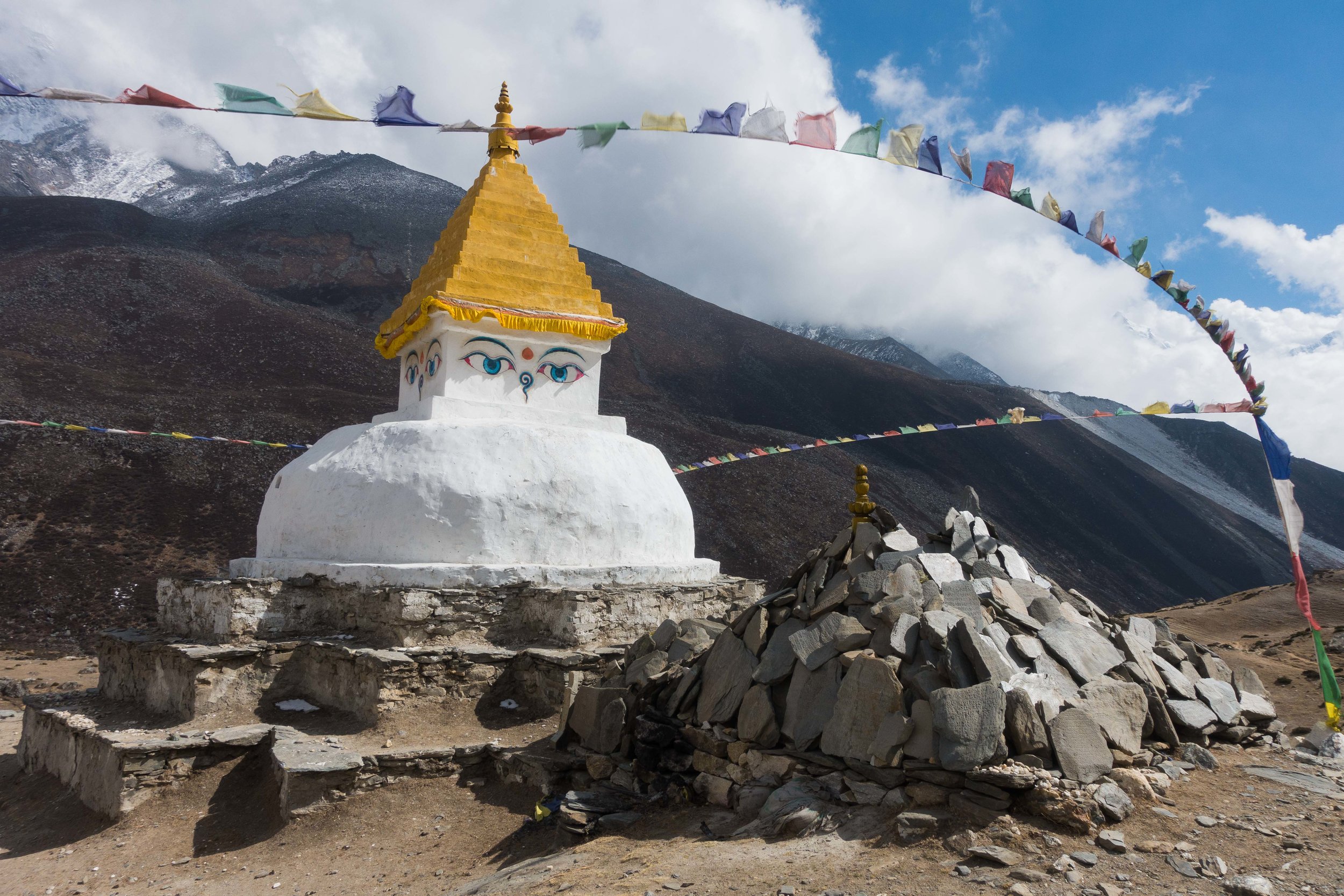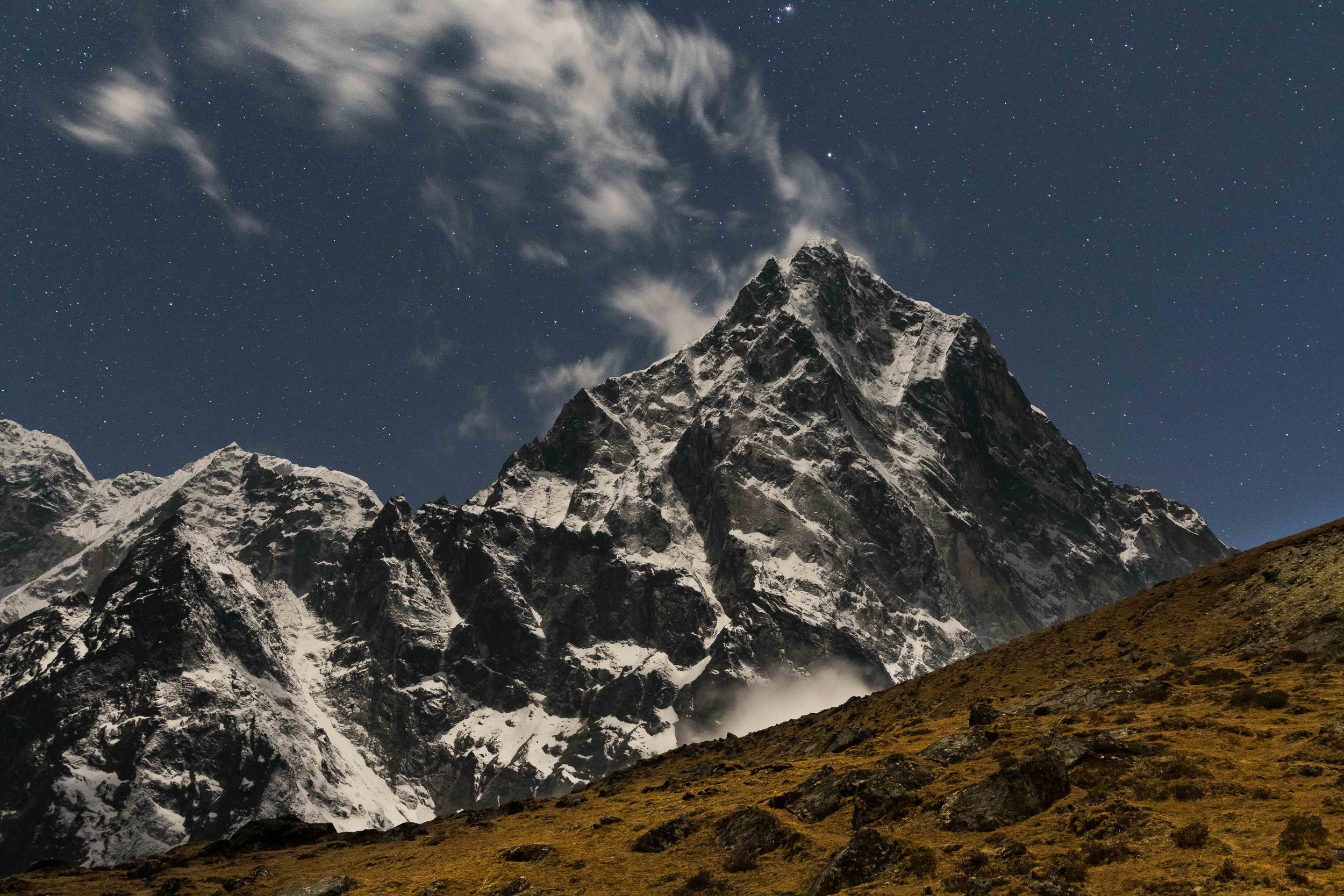International Mountain Guides (IMG) Everest Base Camp - 17,329 ft (5,283 m)
Here we are at Everest Base Camp, our home for the next many weeks. Our advance from Namche has taken us through Mongla, Phortse, Pangboche, Pheriche, Thokla, Lobuche, Gorak Shep, and finally onto the Khumbu Glacier. Traveling along such an avenue of Nepali geography and heritage, it seems ridiculously incongruent to designate the massif at the terminus of our trek by its colonial moniker “Everest.” For this reason, henceforth I will call the mountain by its local Nepali name: Sagarmāthā.
Everest Base Camp at night with the West Shoulder of Sagarmāthā in the distance
As an atheist and a trained engineer, I am also a humanist. From the poetry of Blake to the equations of Hawking, the achievements of civilization have imposed beauty upon a disordered natural canvas. We have been blessed with the courage and cleverness to distill a mysterious patchwork of unknown features to its elemental threads. Our intellectual and physical conquest have created a society in which dancers can induce an upwelling of emotion through the grace of a single movement, welders can construct towering steel monoliths through their bravery and workmanship, and researchers can wage war against primordial diseases through their indefatigable ingenuity. I find great solace in humanity’s accomplishments because it promises so many yet unimagined advancements.
Among this list of our achievements is that humans have summitted Sagarmāthā. My group’s expedition to the mountain is not a novel endeavor, but it is still a worthy one. Rather than being commissioned to score a new masterpiece, we climbers are members of an ensemble improvising around the notes of an old jazz standard. Conducted by our expedition leader, we start our concert with hope but no expectation. The fickle, Dadaistic nature of the mountain may end our performance in the middle of a refrain, but we quest to play our interpretation of every verse and to discover some yet uncommunicated, more personal nuance of the original song. Even though we do not demand a specific resolution, our efforts are neither feeble nor aimless. Our band leader may direct us to descend into the aggression of a roiling drum fill or to change the key during a delicate and sparse piano solo. Each of us will contribute to the arc of the melody. We will play as a team.
This sets the stage for a series of unlikely contradictions: Even after years of anticipation and with a regimented expedition schedule, we have no expectation to summit or even climb the mountain; we will do only what She permits us. The extreme might required during the climb will be directed not at the external forces that conspire to keep us grounded but instead will buttress the internal impetus that propels us forward. That I, a humanist, am impressed less with my predecessors’ achievements on this peak and more with the natural processes that created this alpine playground.
First Views of Sagarmāthā (top left of photo)
In the Khumbu Valley, these contradictions also take physical form. Almost immediately upon leaving Namche Bazar, my expedition caught its first glimpse of Sagarmāthā and Lhotse. Impressed with their majesty, we genuflected as any trekker might: with a volley of photos and selfies. Though their visage of these mountains was striking, Ama Dablam (22,349 ft; 6,812 m) quickly monopolized our attention during our three day hike from Namche Bazar to Pheriche. As we trekked along the western edge of the peak, the precipitous pitch of its razor thin ridges was revealed as they were thrown into relief against the blue bird sky. Ama Dablam’s hanging glaciers evoke the image of jewels and give the mountain its name - Ama Dablam means “Mother’s necklace” in Nepali. These frozen towers impressed us as they defied gravity, the azure plumage of their icy layers scintillating in the sun. And so the monarchs of this range were temporarily usurped by their subordinate cousin.
The team overshadowed by Ama Dablam
As we climbed from the valley carved by the Dudh Koshi River to Phortse, we discarded the saturnine embrace of the lower valley. In the upper valley life is harder and starker. Phortse is a town of climbers; over 60 summitters of Sagarmāthā, including many of our sherpa, call the town home. One might expect that such a prolific source of accomplished climbers to have adopted a latent haughtiness. Instead, the humility and hospitality of Sherpa culture permeates every interaction. Tea houses and terraces spread over the hillside, and a chorten lays in ruins, still evincing the damage from the earthquake in 2015.
Leaving Phortse for Pangboche, the white pines festooned with sphagnum blended seamlessly into a smattering of waist high shrubs and then to hills balding but for patches of alpine grass. Now our path was defined not by a foot trail trampled through the hardy mountain vegetation but by a string of yak dung occasionally punctuated by a cairn or chorten. The primary purpose for our stop in Pangboche was to be blessed by Lama Geshe, whose dimly-lit monastic dwelling was permeated by the putrid aroma of yak butter candles. Overwhelmed by the sensory bath, we were transported into the world of his devout supplication to the rigors of a peaceful life. Lama Geshe anointed each trekker by draping a kata, a ivory-colored silk scarf, around the trekker’s neck while reciting a prayer and touching his forehead to the trekker’s. As we drank tea, the lama spoke in Tibetan and espoused the tenets of his Enlightenment. His monologue culminated in the recitation of a prayer of his authorship: Om Ma Ni Pad Me Hung Hri, “Give up all intentions to harm others from your heart and do your best to benefit them all. If each and everyone feels the universal responsibility to do so, we will all enjoy the feast of peace!”
From Pangboche, we traveled to Pheriche, a village with no discernible industry other than catering to trekkers and climbers passing through on their way to Island Peak, Gokyo, or Sagarmāthā. After two nights we continued on to Lobuche Base Camp, where we adopted camp life: sleeping in tents, defecating in bucket toilets, and constantly fighting each evening’s unrelenting cold. Days since have been filled with brief acclimatization hikes in the morning and hours of relaxation and rest in the afternoon, the canonical strategy for adapting to the rarefied atmosphere. At night you are treated to a martian landscape bathed in the low contrast illumination of the waxing moon. The views are impressive, but the sounds of the mountainside are more enticing: Grouse warble as they search for the food scraps left from yesterday’s dinner, a chef ignites a stove to prepare a new meal, wind whistles around gendarmes on the ridge. This harmony serves as a paean to the comforts we’ve left behind.
Our path from Lobuche Base Camp descended to the valley floor. Bergs of ice poked through the continuous sea of alluvial sediment, so we could never be certain if were walking on a glacier or a moraine. We stopped briefly in Gorak Shep to avail ourselves of a tea house’s WiFi, and we continued towards Everest Base Camp which floats atop the Khumbu Glacier, a river of ice spilling from a cut between the West Shoulder of Sagarmāthā and Nuptse. As our camp came into view, I was impressed and dumbstruck by the the Khumbu Icefall, the riskiest section of our upcoming climb. The Icefall’s fractal beauty momentarily distracts you from its deadly nature, but undeterred, I began to study it to understand its nature.
The deadly Khumbu Glacier Ice Fall. We have to climb through that pile of seracs six times.
Yesterday our expedition was blessed during a puja at base camp in anticipation of this week’s climb of Lobuche. Om Ma Ni Pad Me Hung Hri.
